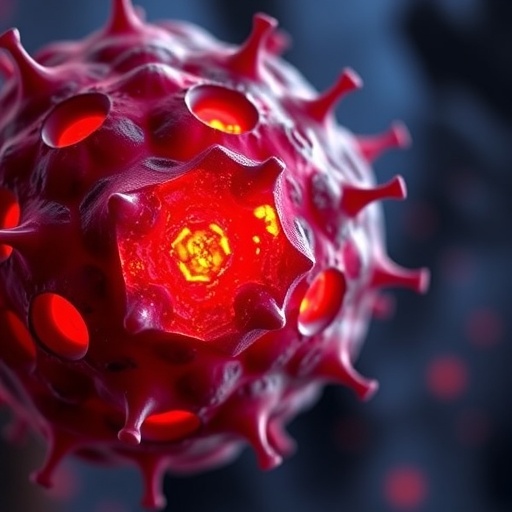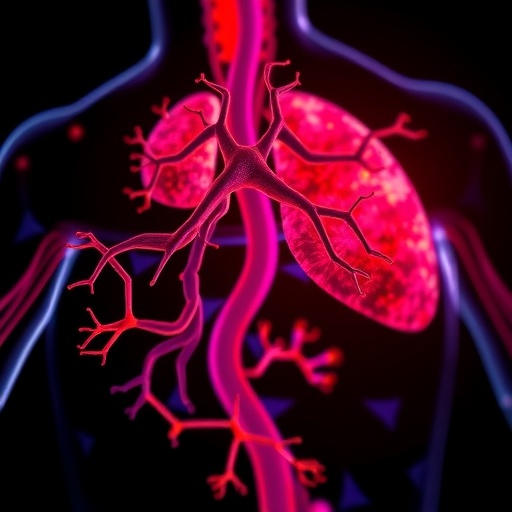A groundbreaking discovery at Oregon Health & Science University (OHSU) has unveiled a novel therapeutic candidate with the potential to revolutionize the treatment landscape for triple-negative breast cancer (TNBC), one of the most aggressive and treatment-resistant forms of breast cancer. This promising advancement stems from meticulous research centered on a molecule designated SU212, which has demonstrated remarkable efficacy in preclinical models, specifically humanized mice. The findings, published in Cell Reports Medicine, highlight the molecule’s aptitude to inhibit a pivotal enzyme known as enolase 1 (ENO1), a key driver in cancer metabolism and progression.
Triple-negative breast cancer presents a formidable challenge due to its lack of hormone receptors and HER2 expression, effectively eliminating many targeted therapy options available for other breast cancer subtypes. This aggressive malignancy disproportionately affects younger women and is associated with poor prognosis, high rates of recurrence, and widespread metastasis. The molecular intricacies of TNBC have long hindered effective treatment, making the identification of innovative therapeutic targets a crucial priority in oncology research.
The study spearheaded by Dr. Sanjay V. Malhotra, Ph.D., co-director of the Center for Experimental Therapeutics at the OHSU Knight Cancer Institute, elucidates the unique mechanism by which SU212 acts. Unlike traditional orthosteric inhibitors that bind directly to the active site of target enzymes, SU212 operates through a non-orthosteric mode of inhibition. This subtler engagement induces the degradation of ENO1 rather than mere enzymatic blockade, ultimately suppressing tumor growth and metastatic spread in vivo. This level of mechanistic insight lends significant weight to SU212’s potential clinical utility.
Enolase 1 plays a fundamental role in glycolysis, the metabolic pathway by which glucose is converted into energy, a process that cancer cells notoriously upregulate to fuel their rapid proliferation. ENO1 overexpression in cancerous tissues amplifies glycolytic flux, thus contributing to tumor survival and aggressiveness. By targeting ENO1 for degradation, SU212 disrupts this metabolic advantage, effectively impairing the energy homeostasis critical for cancer cell viability and dissemination.
The research team employed humanized mouse models, which are mice engineered to carry human immune cells, thus more accurately replicating the complex interactions between tumor cells and the immune system found in patients. The application of such advanced models enhances the translational relevance of SU212’s efficacy, providing a more precise prediction of its therapeutic potential in humans.
Of notable significance is the molecule’s dual relevance in cancer and metabolic diseases. Since ENO1 is intrinsically linked to glucose metabolism, SU212 might offer distinct advantages for patients battling concurrent metabolic disorders such as diabetes. This intersection is particularly important, given the epidemiological convergence of diabetes and cancer, where hyperglycemia potentially exacerbates tumor progression.
As the preclinical data mounts, the imperative next steps involve advancing SU212 into clinical trials—a process that demands rigorous toxicological profiling, formulation optimization, and substantial investment to navigate regulatory pathways. Dr. Malhotra emphasizes this transition as imperative, underscoring the urgency to translate these findings rapidly from bench to bedside to address the unmet medical needs of TNBC patients.
Beyond triple-negative breast cancer, the modulatory effect of SU212 on ENO1 holds promise for other malignancies characterized by ENO1 dysregulation. These include gliomas, which are aggressive brain tumors; pancreatic ductal adenocarcinoma, notorious for poor prognosis; and thyroid carcinoma. The broad applicability underscores a potential paradigm shift in oncology wherein metabolic vulnerabilities become exploitable therapeutic targets across multiple cancer types.
Dr. Malhotra’s journey from the National Cancer Institute and subsequently Stanford University to OHSU reflects a dedicated pursuit of translating complex molecular insights into tangible clinical solutions. His leadership at OHSU’s Center for Experimental Therapeutics is emblematic of the institution’s commitment to pioneering innovative cancer therapies by bridging rigorous scientific investigation with clinical trial initiation.
The implications of SU212’s mechanism extend beyond direct cytotoxicity. By promoting the degradation of ENO1, there is theoretical potential for SU212 to alleviate the immunosuppressive tumor microenvironment, thus potentially augmenting immune-mediated tumor clearance. This prospect opens avenues for combinatorial therapies integrating SU212 with immuno-oncology agents.
Funding for this research has been robust, harnessing support from prominent institutions including the National Cancer Institute, the National Institute on Aging, the National Heart, Lung, and Blood Institute, alongside the Department of Defense and OHSU’s own Biomedical Innovation Program. This multidisciplinary backing underscores the high relevance and interdisciplinary nature of the project.
All animal studies conducted adhered strictly to ethical standards as overseen by OHSU’s Institutional Animal Care and Use Committee (IACUC), ensuring rigorous review of scientific value, humane treatment, and safety protocols, both for the animal models and research personnel. Compliance with these ethical frameworks is paramount in maintaining research integrity and societal trust.
The advent of SU212 marks a hopeful milestone in the grueling battle against triple-negative breast cancer. While challenges remain in translating these promising findings into approved therapeutics, the precise targeting of cancer metabolism through novel biochemical strategies presents a compelling frontier in oncology. Continued research and clinical validation may soon offer new hope to patients facing this devastating disease.
Subject of Research: People
Article Title: Non-orthosteric inhibition of enolase 1 impedes growth of triple-negative breast cancer
News Publication Date: 7-Nov-2025
Web References:
OHSU Center for Experimental Therapeutics
Cell Reports Medicine Article
Triple-negative breast cancer definition
References:
Malhotra, S.V., et al. (2025). Non-orthosteric inhibition of enolase 1 impedes growth of triple-negative breast cancer. Cell Reports Medicine. DOI: 10.1016/j.xcrm.2025.102451
Image Credits: Oregon Health & Science University
Keywords: Breast cancer, Triple-negative breast cancer, Enolase 1, Cancer metabolism, Metastasis
Tags: aggressive breast cancer therapiescancer metabolism targetingDr. Sanjay V. Malhotra researchenolase 1 enzyme inhibitionhormone receptor-negative breast cancerinnovative oncology treatmentsnovel therapeutic candidates for cancerOHSU cancer research breakthroughspreclinical models in cancer researchSU212 drug discoverytherapeutic targets in oncologytriple negative breast cancer treatment





